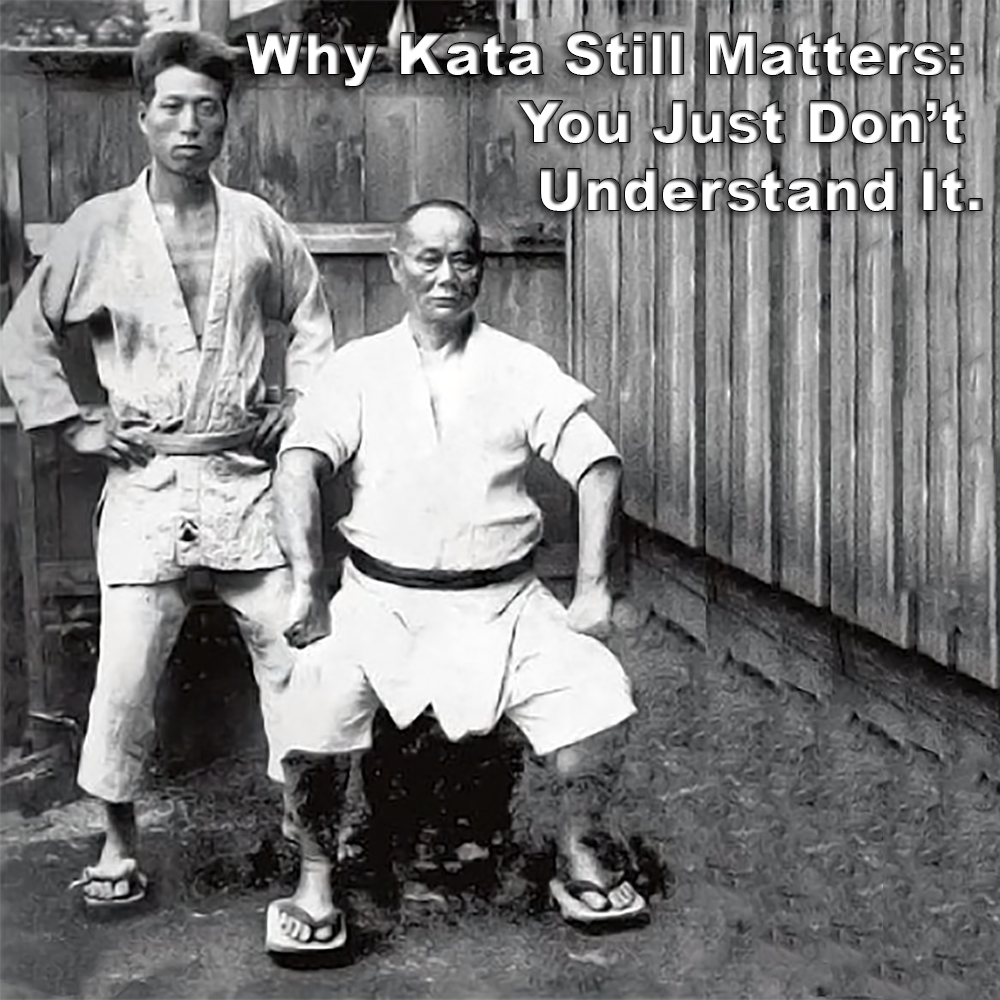
(Approx 2 minute 45 second read)
In a recent article, I wrote about how a single movement from a kata could be so much more than just a punch – a grab, a push, a setup for a throw and much more.
.
I explored the idea that kata isn’t just a rigid performance, but a living system of self-defense. However, you have to look beyond a single technique.
.
The truth lies in the very purpose of kata. For the pioneers of karate, kata wasn’t a choreographed fight sequence to be performed from start to finish.
.
Instead, the initial need was for practical two-person drills, born from common assaults. These drills taught effective responses. Kata then emerged as a mnemonic device – a reminder of those responses that could be practiced when alone.
.
This leads us to the idea that movements in kata often have multiple applications. What might look like a simple ‘block’, for instance, was rarely just a block.
.
That same movement could be taught as a strike, a grab, a joint lock, or even a setup for a throw. This wasn’t guesswork – it was rooted in the versatile combat needed at the time.
.
Instructors would often teach multiple interpretations for the same movement, showing its adaptability. A prime example is Motobu Choki, a legendary Okinawan fighter. He consistently demonstrated how seemingly defensive movements could instantly transition into powerful offensive techniques, proving their multi-purpose nature.
.
People who dismiss kata need to look at its history and understand why we have it in the first place.
.
The comment section on my Page reveals how misunderstood kata still is. Here are a couple of recent examples.
.
Someone said, “I’m not here to learn anything”, then went on a tirade about what karate is – and basically described everything that’s wrong with karate as self-defense, which he practiced and defended doggedly.
.
Another said, “Kata is choreography. Hours upon hours of repetitive technique is good for a competition but in my opinion that’s about it. Spend time with your family, take your wife to dinner – memorable things like that. I’m from the old school: train as you fight, so if you’re going to train to fight then get in the ring/on the mat.”
.
These comments tell me one thing – many people still see kata as a relic for sport or tradition, rather than a living archive of how to survive when things turn ugly. They confuse the repetitive solo practice with the purpose of that practice.
.
One person put it plainly: “One of the major issues is that black belt instructors in many cases don’t know the deeper meanings, hence cannot teach them.” And they’re right.
.
It’s true: endless repetition of a kata, without any clue what the movements are for, is a waste of time if you care about real self-defense. But that’s not kata’s fault – that’s poor teaching, or worse, lazy thinking.
.
‘Train as you fight’, is a good principle, but you can’t fight your partner full-force every day without breaking them or yourself. That’s why the pioneers built kata – to capture the lessons of violent encounters safely, so you could repeat and refine them alone. The goal wasn’t performance, it was preservation.
.
If you really want to “train as you fight”, then understand what you’re fighting against. Real violence is messy, close, and often begins when you’re off-guard.
.
Kata movements, properly understood, address these realities – grabs, sudden strikes, holds, throws, surprise angles. The key is to unlock them, not dismiss them.
.
It comes back to this: kata is not the answer by itself. It’s the notebook. You still need a good teacher to help you read it, test it, and make it yours. Without that, it’s just pages of words you never learned to use.
.
So next time someone tells you kata is dead or useless, remember – the real problem isn’t the kata. It’s the people who can’t be bothered to understand it.
.
.
Written by Adam Carter – Shuri Dojo
